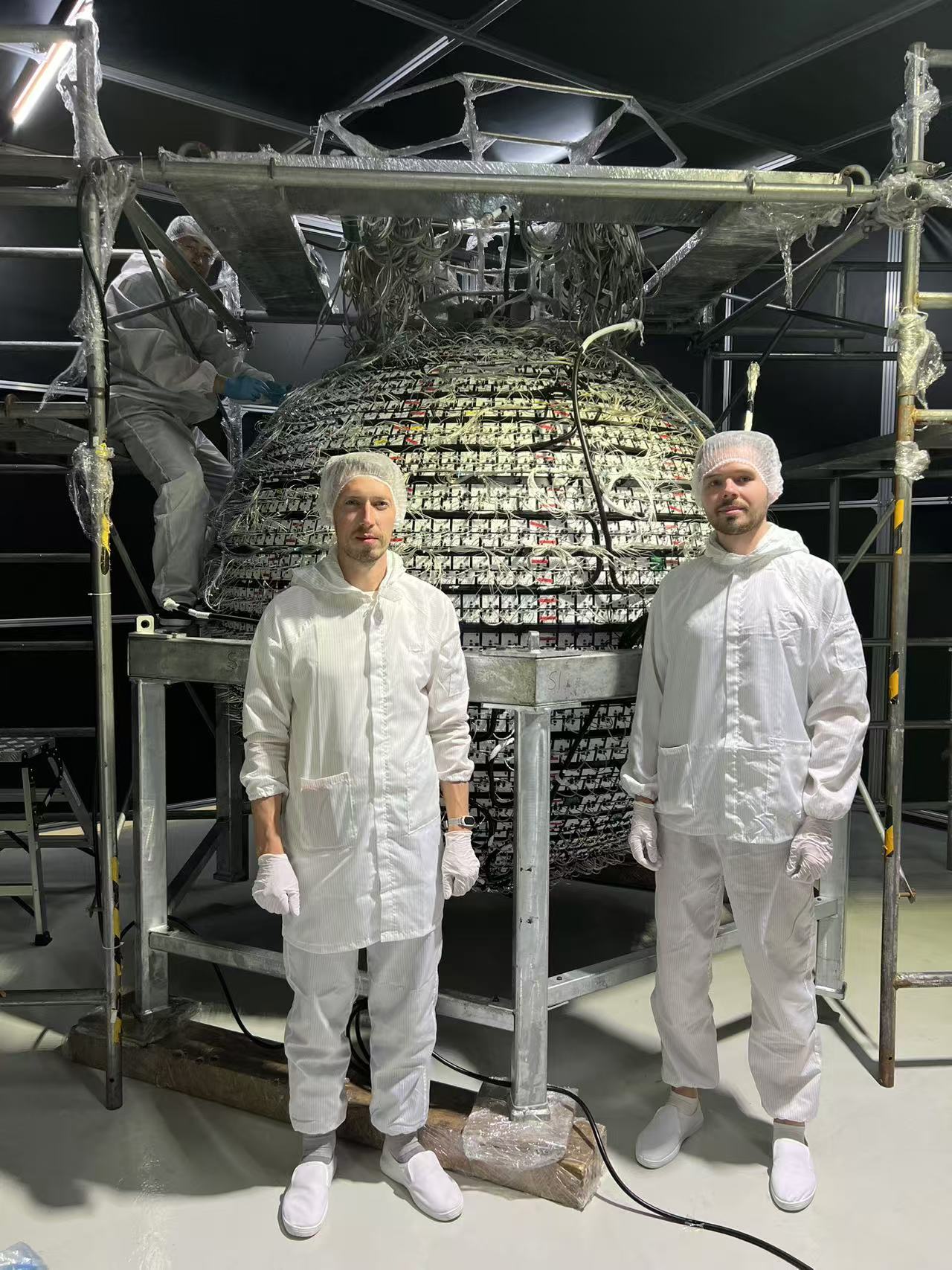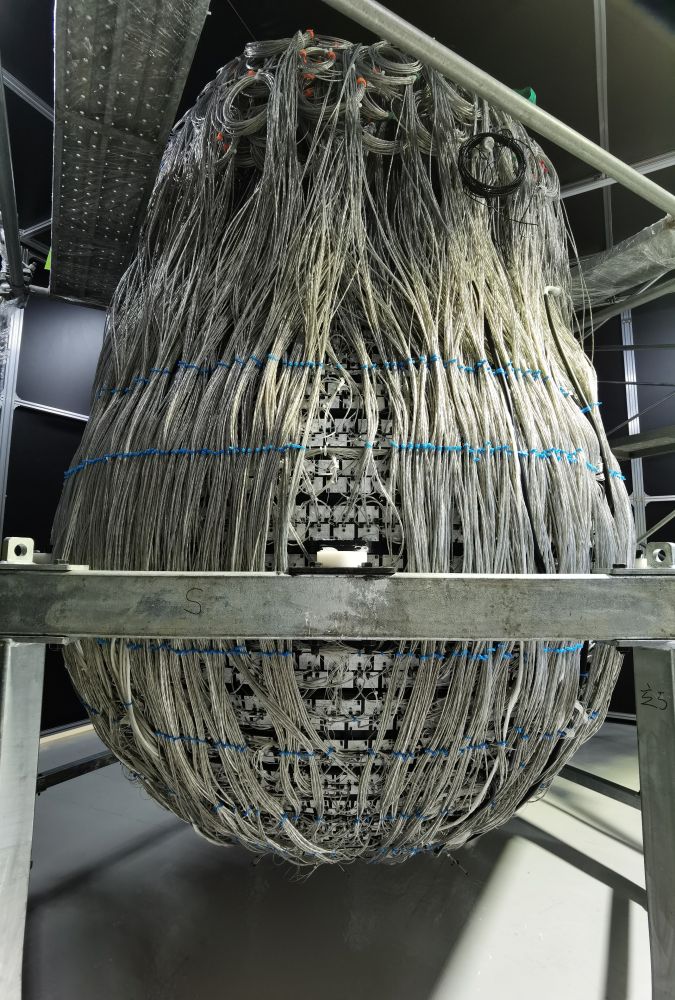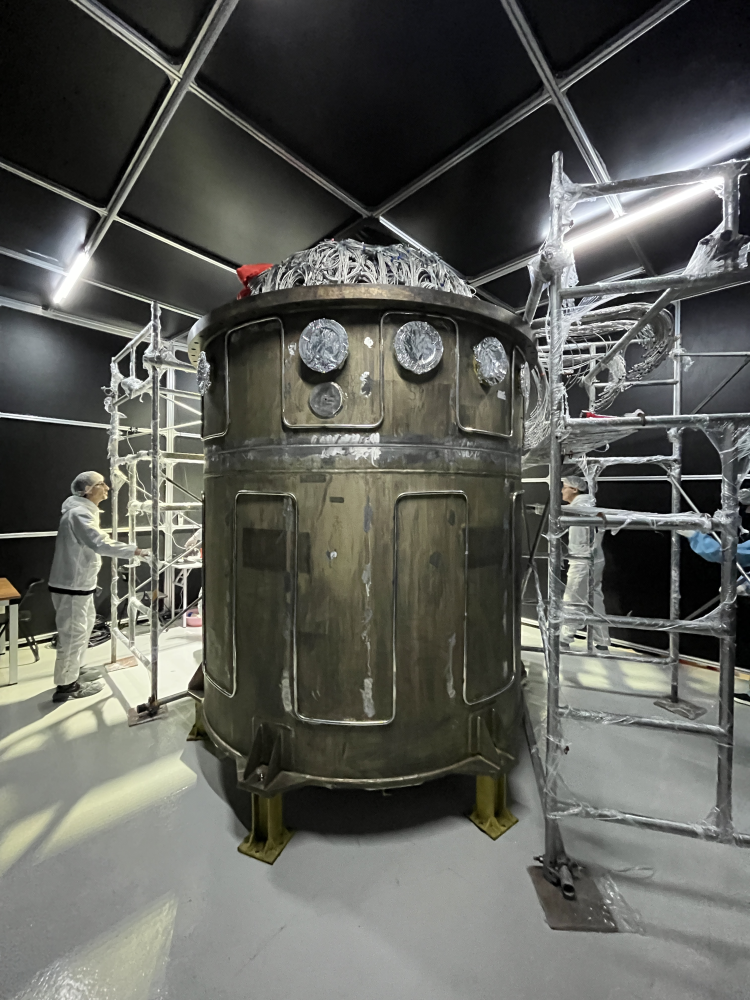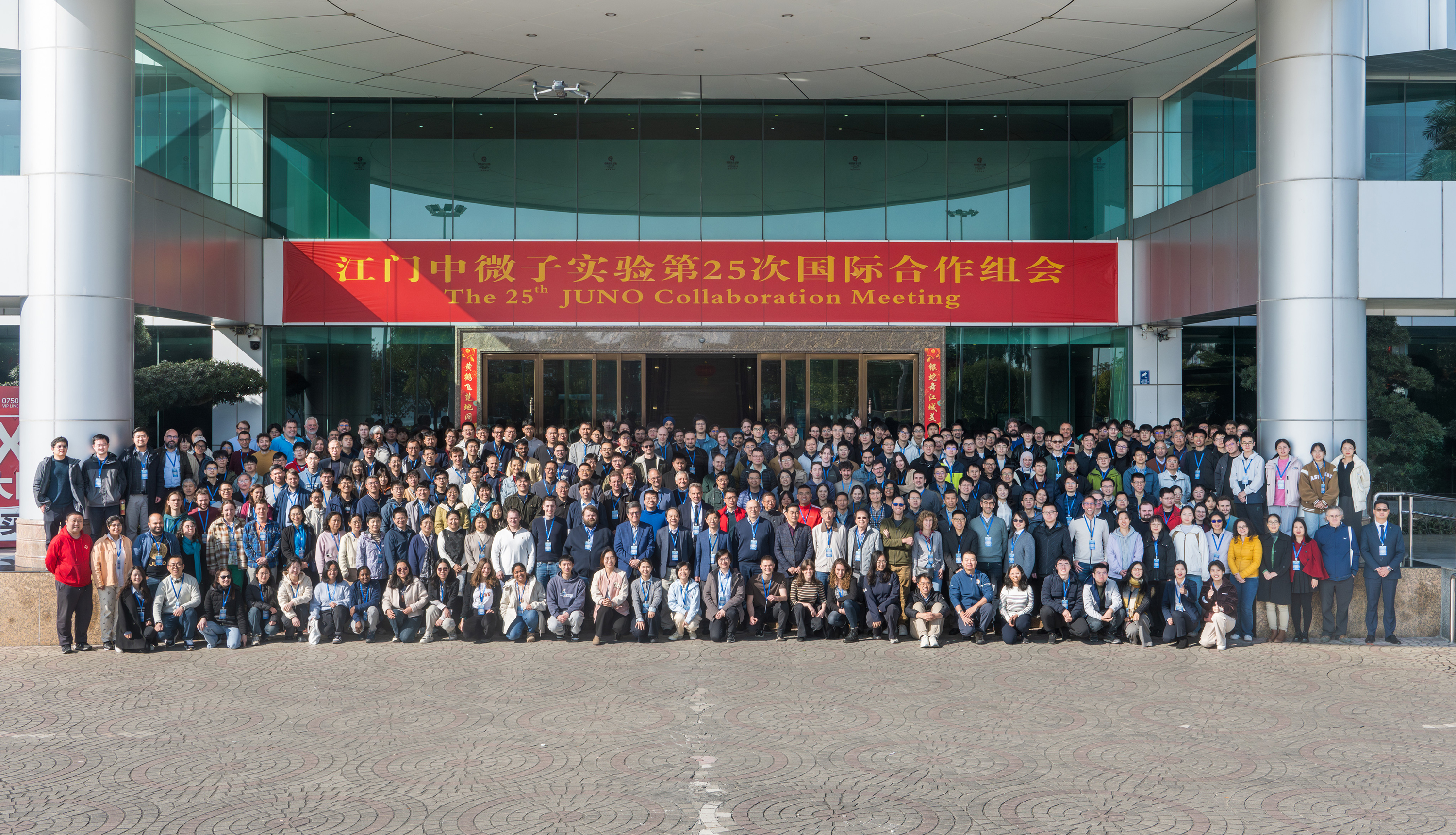DLNP and MLIT JINR employees participated in JUNO Collaboration Meeting
News, 31 January 2025
From 13 to 17 January 2025, the 25th meeting of the international collaboration of the JUNO (Jiangmen Underground Neutrino Observatory) Experiment took place in Kaiping (Guangdong Province, China). Employees of the Laboratory of Nuclear Problems (DLNP) have been actively involved in this project since its foundation.
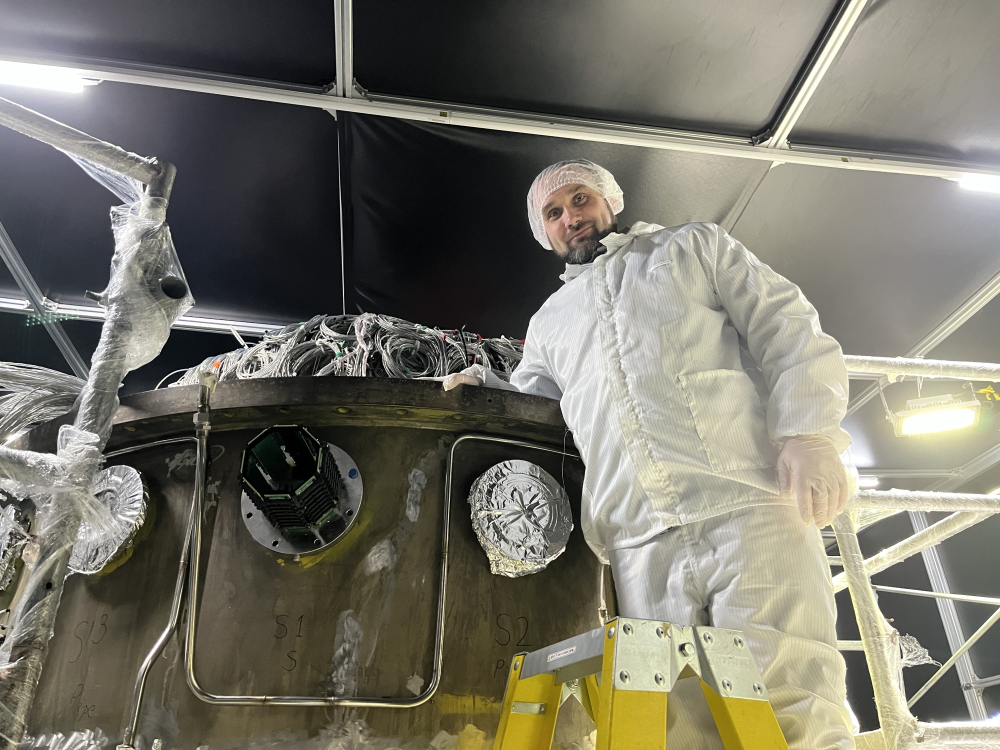 Nikolai Anfimov next to the steel tank containing the TAO Detector
Nikolai Anfimov next to the steel tank containing the TAO Detector
JINR specialists are involved in various tasks in the JUNO Project, from detector assembly to data analysis. Their responsibilities include installing JUNO’s central detector, assembling the Top Tracker muon veto system, developing software for collecting data from it, and participating in the creation and subsequent commissioning of the TAO Satellite Detector. In addition, JINR employees develop muon track reconstruction algorithms and calibration methods for online event classification, participate in creating simulations and carrying out data quality control, study sensitivity, and conduct statistical analysis of reactor and atmospheric neutrinos.
Previously, DLNP employees performed a significant amount of work related to developing and testing power systems for photoelectron multipliers of the JUNO and TAO Detectors. DLNP is represented in the JUNO Executive Board, the leadership of the photomultiplier equipment group, and the Speakers’, Publication, and Data Analysis Committees. JINR is a key provider of computing resources for the JUNO Collaboration, offering at least 2000 computing cores for the experiment’s needs, 1 petabyte of disk storage, and 5 petabytes of tape storage. The Laboratory of Information Technologies (MLIT) provides full support.
Ten JINR employees took part in the meeting: Dmitry Naumov, Yuri Gornushkin, Tatiana Antoshkina, Nikolay Anfimov, Nikita Bessonov, Maxim Gonchar, Dmitrii Dolzhikov, Denis Korablev, Artem Chukanov from DLNP and a MLIT employee Nikita Balashov.
The key topic of discussion was the preparation for the experiment’s start: a six-month procedure of filling the central detector with liquid scintillator, commissioning of photomultipliers, and analysis of equipment response and the first data. Filling the central detector with liquid scintillator will begin in February 2025, and it is planned to finish by the next collaboration meeting in July. A preliminary plan for processing the data collected during this period was presented as well.
The main goal of the JUNO Experiment is to determine the neutrino mass hierarchy. Thanks to the huge volume of the scintillation detector and the high accuracy of energy measurements, the project opens up wide opportunities for fundamental research: from the precision determination of mixing parameters in the lepton sector of the Standard Model and the detection of geoneutrinos and solar neutrinos to the observation of neutrinos from supernovae and the search for new physics, including proton decay.
